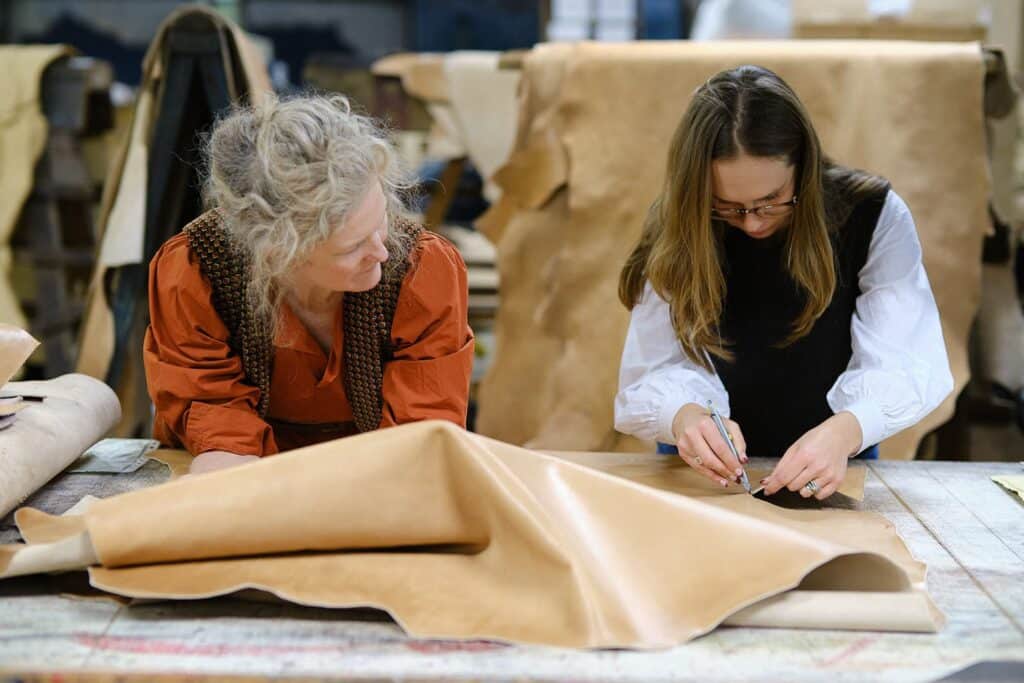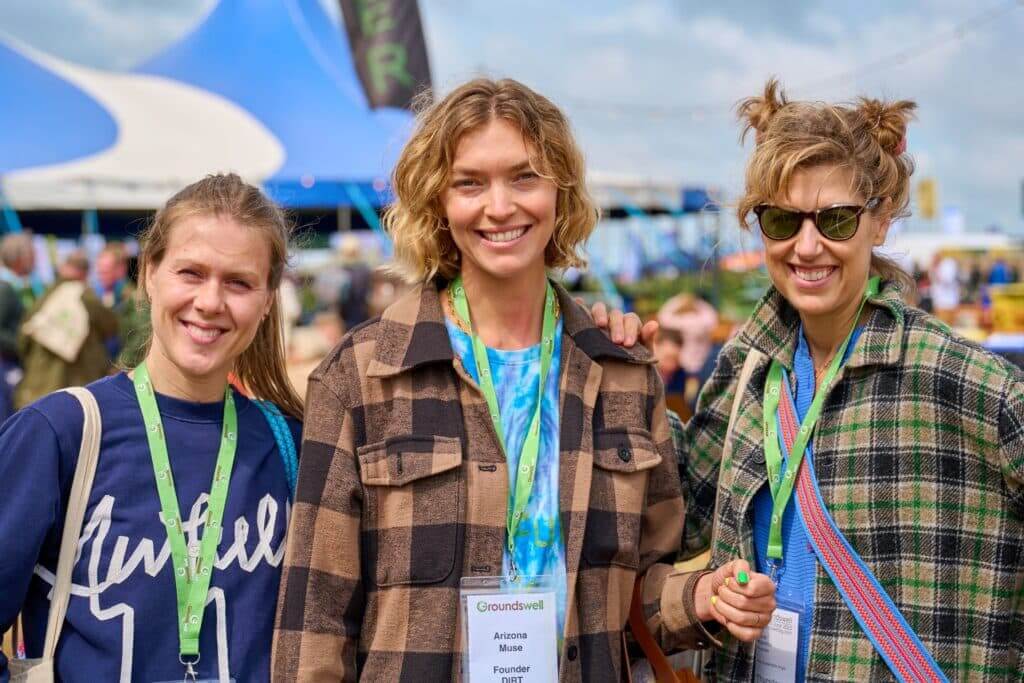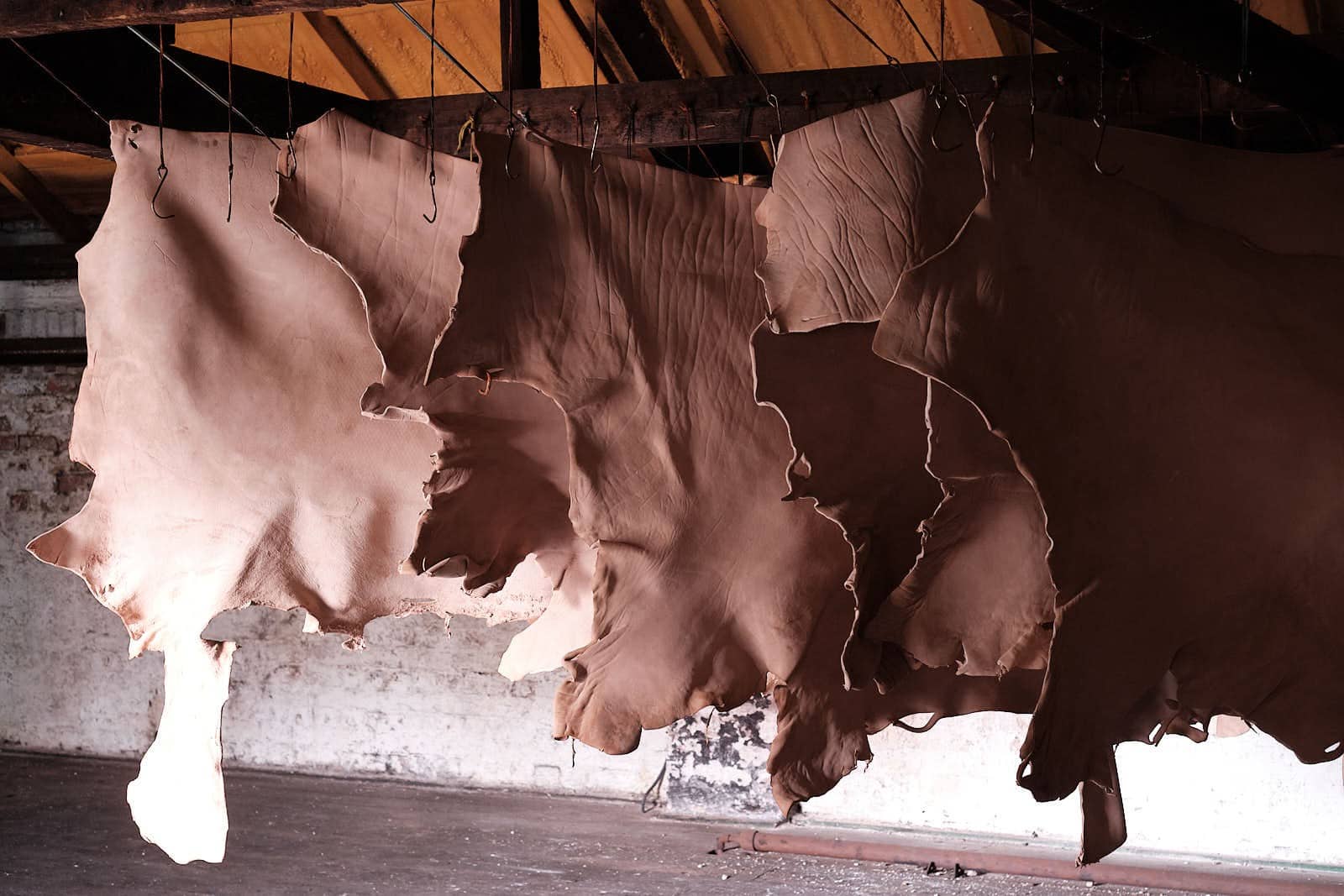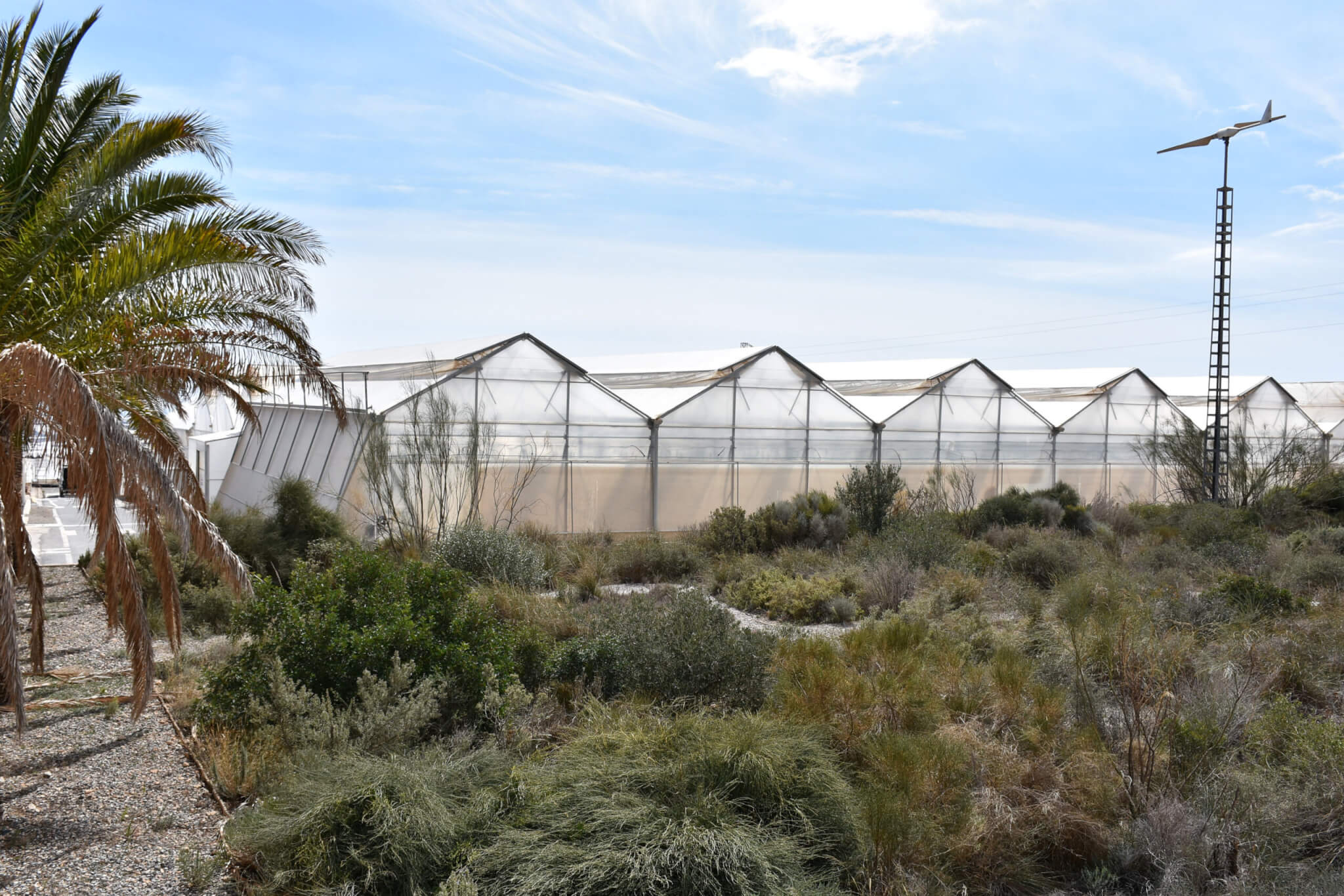Over recent years we’ve become increasingly curious about where our food comes from and how it’s produced. But how about the leather used to make your handbag, shoes, or belt?
Most of us will spend time and energy considering the price, colour and style of these leather goods, often seen as luxury status symbols. We might enquire which country they’re from (basically Italy good, anywhere else less good). But how often do we ask where and how the animal it came from was raised? Probably almost never.
That’s something Sara Grady and her business partner, fashion designer Alice Robinson, want to change. Working with regenerative beef farmers who graze their cattle exclusively on pasture and are certified by Pasture for Life (PfL), Grady and Robinson retrieve hides from abattoirs after slaughter so that these can be turned into what they call British Pasture Leather. This has the same traceability as, say, a bottle of milk or leg of lamb from your local farm shop.
At present, most farmers only get back the meat from their animals, but not the part known as the fifth quarter – that’s the offal, the intestines and the hide. Abattoirs normally sell the hides to traders who in turn sell on to tanneries. These tanneries use chemical processes (including chromium (III), which if oxidised becomes chromium (VI), a known toxin and carcinogen) to turn the hides into leather and add coatings (typically polyurethane). This is the leather that adorns our homes, cars and wardrobes.
Leather is globalised and anonymous. It’s impossible to know where the hide came from and whether or not the animal was raised sustainably. Sara Grady, co-founder of British Pasture Leather
“The link between leather and the farm that produced the hide has been lost,” says Grady, who previously worked in the US for Glynwood, an organisation promoting regional food and regenerative farming. “Leather is globalised and anonymous. It’s impossible to know where the hide came from and whether or not the animal was raised sustainably,” she says.
So the pair keep things local. They coordinate with small British abattoirs to track hides from PfL-certified farms. The hides are then treated with natural tannins derived from barks and leaves at a vegetable tannery in Bristol, one of just two such tanneries left in the UK. Once finished, the leather is suitable for multiple uses, from accessories to furniture and footwear, and it’s already caught the eye of high-end sustainability-minded British designers such as Mulberry, Bill Amberg and Soane.

Robinson, who trained in accessory design at the Royal College of Art, recalls how when she asked where leather comes from, she got no answers. “I was brought up in Shropshire, a vet’s daughter. I found it astounding that I couldn’t be connected to the leather I was using or get reassurance as to how the animal it came from had been raised. I could choose where my food was from, but not my leather,” she told an audience at the regenerative farming gathering Groundswell in June. When she was introduced by a friend to Grady, they realised they shared the same mission and in 2020 they formed Grady + Robinson as a business venture to make British Pasture Leather happen.
Since their first pilot in 2021, the pair have developed a network of Pasture for Life farms from which they collect hides. Many of these farms use small local abattoirs, which also benefit benefit from the business; at present, if these abattoirs don’t have a reliable buyer for their hides, they’re forced to discard them, losing revenue.
One of the companies showing interest in working with British Pasture Leather is Somerset-based high end fashion brand Mulberry.
“Existing supply chains don’t always provide traceability and the leather we’ve been using to date only measures the environmental impact of the tannery, but not of the farm the leather comes from,” says Rosie Wollacott Phillips, Mulberry’s head of sustainability. “British Pasture Leather can help us address this challenge. We have great designers so hopefully now they will be able to work with great, traceable leather too,” adds Wollacott Phillips, who also believes that pasture-grazed cattle produce a higher quality hide.
“Thanks to their all-grass diet, their skins develop a strong fibre structure which gives strength and durability to the leather,” explains Grady.
The leather we’ve been using to date only measures the environmental impact of the tannery, but not of the farm the leather comes from. Rosie Wollacott Phillips, head of sustainability at fashion brand Mulberry
Grady and Robinson are also keen to help individual farmers produce their own ‘single estate’ leather. Those helping to trial this service include Wiltshire-based beef farmer Andy Rumming, who makes belts from the hides of his own cattle and sells them from his website. “Not only will people be able to eat the meadow but wear it too,” he says.

American fashion model Arizona Muse, who set up the regenerate soil and climate charity Dirt, says change in the leather industry is essential. “At present around half of animal hides worldwide go into landfill, which is unacceptable. Those that don’t are treated with toxic chemicals that pollute our rivers,” she says. “As consumers we need to differentiate between leather that’s produced industrially and artisanally, just as we do for food.”
Perhaps Grady and Robinson’s greatest achievement is getting farming and fashion – usually worlds apart – to work together. Leather is not the only material that farmers are producing; there’s wool (like leather, viewed as a by-product) and flax (for linen) too.
As consumers, is it time to use our clothes, handbags and other accessories to help regenerate Britain’s farms?
Field, Fork, Fashion: Bullock 374 and a Designer’s Journey to Find a Future for Leather by Alice Robinson (Chelsea Green, £27) is out on 12 October.









I find this Pasture Leather movement very exciting.
In the late 1970’s and the 1980s there were still a number of tanneries in the south Northants [shoemaking capital of Britain back in the day, still home to a few I believe…] and North Bedfordshire area. Working for Anglian Water we used to analyse the tannery effluent which was pretty foul, to check chrome discharge limits were not exceeded. But I knew a tannery engineer who developed effectively Gulf War syndrome, reducing him to a wheelchair at a young age. He believed this was due to the vapour of insecticide liberated from the hides in the steam of the tannery. Insecticides [perhaps ones banned in Europe] were used on the animals in other continents [I’ll avoid pointing the finger] to minimise tick infestations which would mark the hide reducing the usable area and value.
So as a leather shoe wearer I would very much like to buy my supportive lace-ups, never mind very pricy brand handbags, made from both insecticide-and-chrome-tanning-free leather.